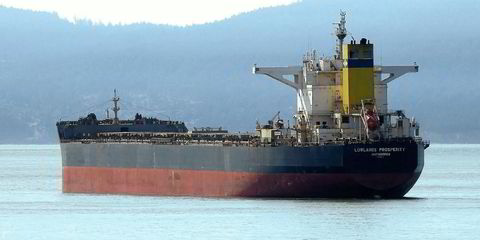Hugo Wynn-Williams, chairman, International Group of P&I Clubs / chief executive, Thomas Miller managers of UK Club:
“The early completion of the International Group reinsurance renewal arrangements, and the further favourable savings in shipowners reinsurance costs, which have been reduced by approximately $90m since 2014, should come as welcome news for shipowners, brokers and clubs alike in the run-up to the February 2017 P&I renewals.
The Group has invested very considerable time and effort with states to deliver the solution for shipowners’ financial certification requirements under the provisions of the Maritime Labour Convention [MLC] which enters into force on 18 January 2017, and in developing the market reinsurance programme to protect against shipowners’ larger potential MLC exposures. Work continues with a view to ensure there is minimal disruption following entry into force of the new requirements.
The update carried out in 2016 of the Group’s large casualty review revealed a positive trend in large casualty cost control and mitigation following the 2013 review and an increasing focus within clubs on effective risk management and transfer in major casualty scenarios. Work will continue during 2017 on the Group outreach programme with maritime administrations, which has already generated productive engagement.
Brexit will undoubtedly pose significant challenges for the clubs based and regulated in the UK, or those seeking to access the UK from an European Union base.
One of the great uncertainties of 2017 will be the approach of the new US administration towards primary and secondary sanctions and prohibition measures in the context of trade with Iran. The Group engaged extensively with the US administration on sanctions issues following the implementation of sanctions relaxations under the JCPOA in January 2016, and it is anticipated that this engagement will continue during 2017.”
Dieter Berg, president, International Union of Marine Insurance / senior executive manager, Munich Re:
“The fragile economic environment has put marine insurers under increasing pressure as the global economy remains sluggish and world trade volume — a key component for our business — is stagnating.
Low interest rates are attracting alternative capital to the insurance markets and the abundance of capacity is driving the soft insurance market conditions. Marine insurers can best manage this difficult situation by staying relevant to their clients by using their risk expertise and sticking to risk adequate pricing.
There are, however, positive developments in emerging markets in Asia, with initiatives such as China’s ‘One Belt, One Road’, which will create large infrastructure projects in more than 60 countries.
The growing accumulation of goods stored in ports and terminals, has raised the issue of marine insurers managing their aggregates in more detail. I see a clear way going forward with all participants in the transport chain co-operating more to better control cargo exposures.
Digitalisation, big data and innovation is also impacting the shipping industry as digital technology will completely transform shipping and logistics. New technologies such as e-navigation, unmanned vessels and the Internet of things will make shipping safer, cheaper and more efficient. Increasing reliance on high levels of data exchange exposes the industry to potential cyber attacks but provides the opportunity for insurers to develop intelligent and innovative products tailored to clients’ needs. “
Peter Townsend, deputy chairman, London insurance market’s Joint Hull Committee/ head marine underwriting, AmTrust’s syndicate 1206:
“Turn the music up! The marine insurance market is analogous to an old car with many miles on the clock. The clutch is slipping, the differential is whining and the gears are sticking. So, what do underwriters do? Get it serviced? Of course not, they turn the radio up, because if you can’t hear the problems then of course there can be nothing wrong….(mea culpa by the way)
However, in addition to worn parts, underwriters are driving on the wrong side of the road and there is a sharp bend ahead.
Following 18 years of consecutive loss (the one year that was reported as being profitable has now deteriorated into loss) the hull market sees fit to give reductions that are now compounded over two or more years.
Underwriting losses do not appear to have worsened much so far. Given premium reductions, the only conclusion that can reasonably be drawn is that claims are down. Why would that be? Ships better run? Slow steaming resulting in less wear and tear? Ships idle in any of hot, warm or cold lay up?
Cold comfort on the good news front. Now the bad news. Down the road there is an obstruction, a road block possibly. The premium base has been eroded due to several factors. Soft market terms being achieved, vessels laid up with premium returns and, possibly most worrying, value reductions.
Ship premium rates are an amalgam of two elements, total loss premium, (largely a function of value) and partial loss premium, which is not a function of value. As values fall total loss payments fall. Partial losses, as they are more a function of the type and size of a ship rather than the value, do not — but there is a smaller pot to pay for them.
General premium reductions and lay up returns are exacerbated by reduced partial loss premium due to value reductions, with seemingly no commensurate further reduction of risk.
Turn the music up, let’s hope the brakes work and the seatbelts are securely fastened. It’s going to be a bumpy ride.”



